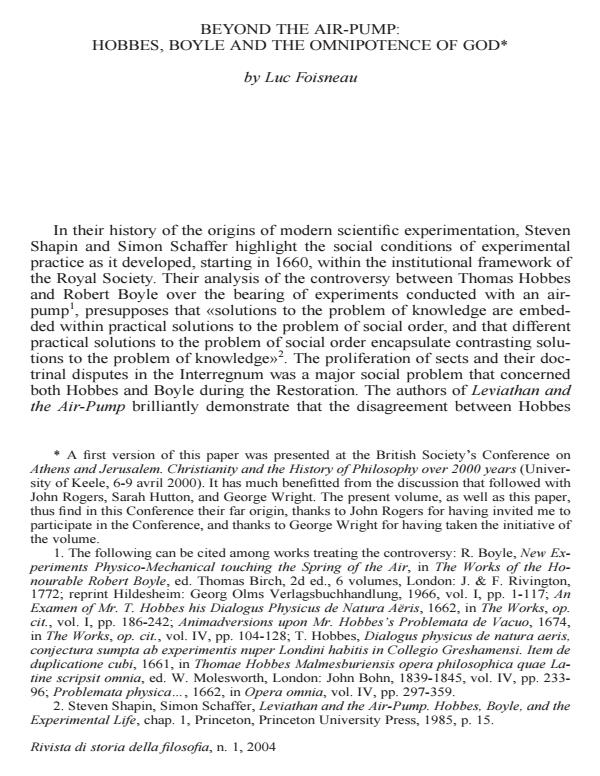Beyond the air-pump: Hobbes, boyle and the omnipotence of god
Journal title RIVISTA DI STORIA DELLA FILOSOFIA
Author/s Luc Foisneau
Publishing Year 2004 Issue 2004/1
Language English Pages 17 P. File size 71 KB
DOI
DOI is like a bar code for intellectual property: to have more infomation
click here
Below, you can see the article first page
If you want to buy this article in PDF format, you can do it, following the instructions to buy download credits

FrancoAngeli is member of Publishers International Linking Association, Inc (PILA), a not-for-profit association which run the CrossRef service enabling links to and from online scholarly content.
<i> Beyond the Air-pump: Hobbes, Boyle and the Omnipotence of God </i> (by Luc Foisneau) - ABSTRACT: In a response that is both appreciative and critical, Luc Foisneau addresses several questions raised by the well-known work of Steven Shapin and Simon Shaeffer, Hobbes and the Air-Pump (Princeton, NJ: Princeton University Press, 1985). Foisneau shows that the dispute between Hobbes and Robert Boyle stemmed not only from social or epistemological matters but also from divergent interpretations of the status of religion and theology. Insisting on the importance of Hobbes’s theory of natural religion, the author links the concept of omnipotence, as Hobbes develops it, to the natural obligation to obey the laws of nature. Nonetheless, the figure of the almighty God who rules over humanity through fear of death is only indirectly rooted in the science of nature, and it is here that Foisneau marks a key difference between Hobbes and Boyle, for whom experimental science could provide a naturalistic re-founding of Christian theology. Reverting to Cartesian arguments regarding the immortality of the soul and divine providence, Boyle believed that experiments obliged the mind of the researcher to witness to God’s transcendence and government of the world. Thus disposed by the new science, the scientist naturally becomes Christian.
Luc Foisneau, Beyond the air-pump: Hobbes, boyle and the omnipotence of god in "RIVISTA DI STORIA DELLA FILOSOFIA" 1/2004, pp , DOI: